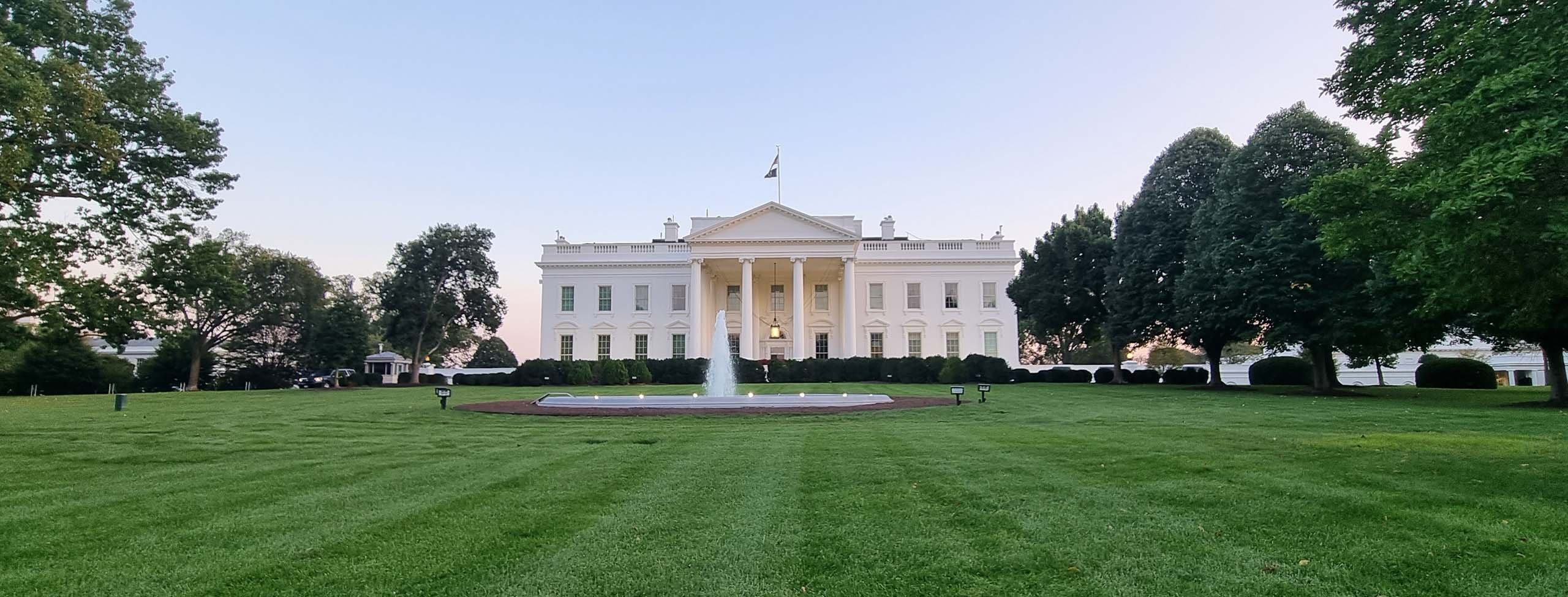
2 April 2025 • 37 minute read
Tracking Trump tariffs
This page was last updated Thursday, July 10, 2025 at 10:30 am ET. Please visit our National Security and Global Trade and Government Affairs and Public Policy pages for more.
Since taking office, President Trump has signed dozens of executive orders, under several statutory authorities, impacting international trade. Some tariffs have been enacted and then paused; others have been modified based on country-to-country negotiations. Additionally, trading partners have retaliated with tariffs of their own. As a result, companies with cross-border trade face a challenging landscape of uncertainty and increasing costs.
DLA Piper’s National Security and Global Trade team is closely monitoring the tariff landscape, in coordination with the Government Affairs and Public Policy team, and advising clients daily on how to mitigate the economic uncertainties that new and anticipated tariffs create. Below, we describe the current state of US tariffs and the various ways that the DLA teams can help with mitigation strategies.
Current tariffs
Reciprocal tariffs
Under the authority of the International Emergency Economic Powers Act (“IEEPA”), President Trump instituted a 10 percent baseline “reciprocal tariff” on imports from all countries (excluding Canada and Mexico, see below), which went into effect on April 5, 2025. He also announced country-specific tariffs based on the United States trade deficit with the trading country, which were to go into effect on April 9, 2025, but were paused for all countries except China until July 9, 2025. China’s country-specific reciprocal tariff rate was paused on May 14, 2025, until August 12, 2025.
On July 7, 2025, President Trump announced updated reciprocal tariff rates for a number of countries, and delayed the effective date to August 1, 2025, with the exception of China’s country-specific rate that is paused until August 12, 2025 pursuant to the recently announced trade deal (these changes are reflected in the table below).
These tariffs stack on top of the existing Chapter 1-97, Section 301 duties, and the IEEPA fentanyl tariffs on products of China. The reciprocal tariffs do not apply to Canada and Mexico (while the IEEPA fentanyl/immigration tariffs remain in effect), and goods which are currently subject to Section 232 duties or will be subject to Section 232 duties as part of ongoing investigations (detailed below). In other words, where the Section 232 tariffs apply and reciprocal tariffs do not.
The US has engaged in ongoing trade negotiations with dozens of countries since the April reciprocal tariff pause. Thus far, the US has announced the following deals:
United Kingdom: 10 percent baseline tariff on UK imports, including cars, and a 0 percent tariff on aerospace imports.
China: 30 percent tariff on all Chinese imports (10 percent IEEPA reciprocal tariff + 20 percent IEEPA fentanyl tariff) in addition to Section 301 tariffs, as applicable. The deal supposedly relaxes certain export controls restrictions on China in exchange for increased access to Chinese rare earth minerals and magnets, but the terms of the deal have not been published.
Vietnam: supposedly 20 percent tariff on all products of Vietnam, and 40 percent on all “transshipped” goods, in exchange for opening Vietnamese markets to US goods, but the terms of the deal have not been published.
There are several ongoing legal challenges to President Trump’s authority to impose tariffs under IEEPA, the authority used to levy the Reciprocal Tariffs. These challenges are highlighted in more detail below.
| Country | Tariff rate | Country | Tariff rate | Country | Tariff rate |
| Algeria | 30 percent | Iraq | 30 percent (formerly 39 percent) | Nigeria | 14 percent |
| Angola | 32 percent | Israel | 17 percent | North Macedonia | 33 percent |
| Bangladesh | 35 percent (formerly 37 percent) | Japan | 25 percent (formerly 24 percent) | Norway | 15 percent |
| Bosnia and Herzegovina | 30 percent (formerly 35 percent) | Jordan | 20 percent | Pakistan | 29 percent |
| Botswana | 37 percent | Kazakhstan | 25 percent (formerly 27 percent) | Philippines | 20 percent (formerly 17 percent) |
| Brazil | 50 percent (formerly 10 percent) | Laos | 40 percent (formerly 48 percent) | Serbia | 35 percent (formerly 37 percent) |
| Brunei | 25 percent (formerly 24 percent) | Lesotho | 50 percent | South Africa | 30 percent |
| Cambodia | 36 percent (formerly 49 percent) | Libya | 30 percent (formerly 31 percent) | South Korea | 25 percent |
| Cameroon | 11 percent | Liechtenstein | 37 percent | Sri Lanka | 30 percent (formerly 44 percent) |
| Chad | 13 percent | Madagascar | 47 percent | Switzerland | 31 percent |
| China* | 10 percent* (for a total baseline of 30 percent, including 20 percent fentanyl tariffs) | Malawi | 17 percent | Syria | 41 percent |
| Côte d`Ivoire | 21 percent | Malaysia | 25 percent (formerly 24 percent) | Taiwan | 32 percent |
| Democratic Republic of the Congo | 11 percent | Mauritius | 40 percent | Thailand | 36 percent |
| Equatorial Guinea | 13 percent | Moldova | 25 percent (formerly 31 percent) | Tunisia | 25 percent (formerly 28 percent) |
| European Union | 20 percent | Mozambique | 16 percent | Vanuatu | 22 percent |
| Falkland Islands | 41 percent | Myanmar (Burma) | 40 percent (formerly 44 percent) | Venezuela | 15 percent |
| Fiji | 32 percent | Namibia | 21 percent | Vietnam* | 20 percent* |
| Guyana | 38 percent | Nauru | 30 percent | Zambia | 17 percent |
| India | 26 percent | Nicaragua | 18 percent | Zimbabwe | 18 percent |
| Indonesia | 32 percent |
Goods with at least 20 percent US content are tariffed only on the value of the non-US content. In other words, the value of the US content is exempted from the reciprocal tariffs (provided that at least 20 percent of the value is US content).
Section 232 Tariffs
The Trump Administration has initiated a number of Section 232 National Security investigations, into various imports and sectors; several of these investigations have concluded with the imposition of tariffs, while others remain ongoing. These investigations have been initiated on an accelerated basis and we anticipate their conclusions, and more possible tariffs, to begin rolling out in the coming weeks and months.
Steel and aluminum, and certain derivative products, (in effect; 50 percent as of June 4, 2025)
Automobiles and auto parts (in effect; 25 percent as of April 3, 2025)
Medium and heavy-duty trucks and their parts and derivative products.
Copper, scrap copper, and derivative products (50 percent, effective August 1, 2025).
Pharmaceuticals, pharmaceutical ingredients, and their derivative products.
Semiconductors, semiconductor manufacturing equipment, and their derivative products “such as those that make up the electronics supply chain.”
Critical Minerals, including processed critical minerals and derivative products like smartphones and other electronics and their components.
Commercial aircraft and jet engines and their parts.
Energy and Energy Products
Lumber Articles
Synthetic Opioid (Fentanyl) and Immigration Tariffs
On February 1, 2025, President Trump imposed tariffs on China, Canada and Mexico pursuant to IEEPA for not doing enough to curb illegal migration and fentanyl trafficking into the US
Chinese origin goods (including Hong Kong) initially carried a 10 percent tariff rate, but President Trump increased the rate to 20 percent on March 4, 2025.
President Trump initially paused the Fentanyl tariffs on Canadian and Mexican goods but later made them effective at a rate of 25 percent on March 4, 2025. On March 7, 2025, President Trump excluded from the Canada and Mexico IEEPA fentanyl tariffs all goods that qualify for USMCA treatment. Canadian and Mexican goods subject to these tariffs are exempted from the Reciprocal Tariffs so long as the fentanyl tariffs remain in place.
These tariffs stack on top of the existing Chapter 1-97 and the Section 301 tariffs.
Section 301 China Tariffs
In 2019, President Trump’s first administration introduced Section 301 tariffs in response to China’s trade practices concerning intellectual property theft and forced technology transfers. The US imposed additional tariffs ranging from 7.5 percent to 25 percent on approximately $370 billion worth of imports from China across four lists (lists 1-4A). These tariffs stack on top of the Chapter 1-97 tariffs, and other additional tariffs.
On April 17, 2025, the United States Trade Representative announced a series of measures under Section 301 targeting the Chinese shipbuilding sector, in the first phase, which will begin after an initial 180-day period during which no fees are charged, fees will be imposed as follows: (1) on vessel owners and operators based in China, calculated according to the net tonnage of cargo transported per voyage to the United States; (2) on operators of ships constructed in China, based on either net tonnage or the number of containers carried; and (3) on foreign-built car carrier vessels. There are also potential measures targeting Liquified Natural Gas vessels, those these proposals are under review. These fees are set to rise gradually throughout the three-year duration of the first phase, and could total more than $3 million per voyage, depending on the vessel size.
HTSUS Normal Tariffs
These tariffs are permanent and depend on the tariff classification of the imported product. Any additional tariffs are stacked on top of the HTSUS Chapter 1-97 tariffs.
Please find below a table tracking additional US tariff updates, and firm insights into these and related developments.
Other Additional Tariffs in Effect
| Tariff Authority | Imposed on | Effective date | Type of tariff | Tariff rate | Exemptions |
| Section 301 | China | 2019 | $370 billion dollars of goods across four separate lists in retaliation for intellectual property theft. | Ranges from 7.5 percent - 25 percent depending on the product | USTR underwent an extensive exclusions process and has renewed hundreds of exclusions for products otherwise targeted under the 301 regime. |
| IEEPA | Canada, Mexico | March 4, 2025 | All goods, excluding energy and potash | 25 percent | USMCA-compliant imports |
| IEEPA | China | Feb 4, 2025 10 percent March 4, 2025 raised to 20 percent | All goods | 20 percent | |
| Section 232 | All countries | March 12, 2025 | Steel/aluminum and certain derivative products | 50 percent (increased from 25 percent effective June 4, 2025) | Derivative products processed outside the US from steel "melted and poured" or aluminum "smelted and cast" in the US |
| Section 232 | All countries (except the UK) | April 3, 2025 | Passenger vehicles and light trucks | 25 percent | Only applicable to the value of non-US content of USMCA-compliant vehicles; not applicable to automobile knock-down kits or parts compilations. On April 29 the Trump Administration issued an Executive order allowing automakers to qualify for tariff relief for a portion of their imports for the next two years, and exempting them from "stacking" other tariffs like those on steel or aluminum. |
| Section 301 | China | October 14, 2025 | Shipbuilding fees on vessels owners and operators based in China, operators of ships build in China, and foreign-built car carrier vessels. | Based on tonnage, up to $3 million per voyage depending on vessel size. | |
| Section 232 | All countries | May 3, 2025 | Key automobile parts (such as engines, transmissions, powertrain components, and electrical components) | 25 percent | Not applicable to USMCA-compliant automobile parts until a process to apply tariffs to their non-US content is established |
| Section 232 | All countries | August 1, 2025 | Copper, scrap copper, and derivative products | 50 percent |
Court challenges
The Trump tariffs face many legal challenges. On May 28, 2025, a three-judge panel of the Court of International Trade (CIT) issued a landmark ruling in consolidated lawsuits challenging the President’s authority to unilaterally impose tariffs under IEEPA. Both complaints asserted that: (1) IEEPA does not give the president broad authority to impose the challenged tariffs, and (2) such broad authority, if statutorily delegated to the president, would be unconstitutional. The CIT held that IEEPA does not provide the president with “unbounded authority” to lay and collect taxes and duties and to “regulate Commerce with foreign nations,” in part because the Constitution exclusively grants those powers to Congress. However, the US Court of Appeals for the Federal Circuit stayed the CIT ruling pending appeal and US Customs continues to collect the tariffs. The Federal Circuit should rule on the case this summer, following oral arguments scheduled for July 31, but any decision will likely be appealed to the US Supreme Court. A case filed in the US District Court for D.C. challenging the IEEPA tariffs has followed a similar path, with the District Court finding the statute does not grant the authority to impose tariffs; the D.C. Circuit Court of Appeals granted the Trump Administration a stay of the decision pending review by the Appeals Court.
Where does this leave importers?
With the tariff landscape changing almost weekly, companies must carefully consider supply chains and cost mitigation strategies. DLA Piper can help with:
Supply chain risk assessments, country of origin analyses, and tariff engineering and mitigation strategies
Outreach to policymakers in Congress and the Executive Branch related to industry and/or company-specific concerns
Proactive monitoring and analysis of developments and trends, and strategic advice on how to plan accordingly
Petitioning for exclusions, when available
Submission of public comments and participation in public hearings, when available
Review and modification of contractual language to shift the burden of payment
Development of an onshoring manufacturing strategy
We’ll continue to monitor the situation and provide updates as warranted.
Contact us
Latest insights
Loading...




